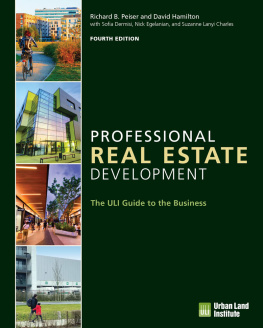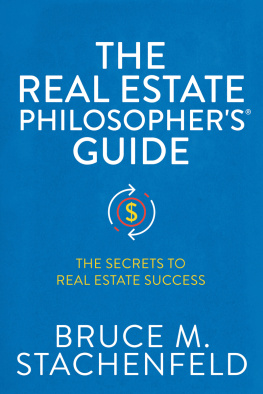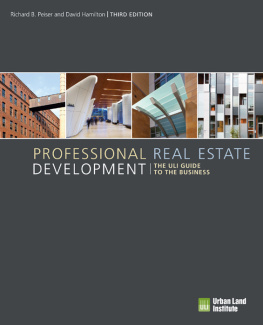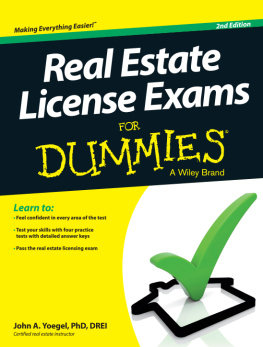Cover: (Top) Downtown Kansas City, Missouri with Union Station in the foreground (Bottom) aerial photograph of the Prairie Ridge Homes Association
Published by State University of New York Press, Albany
2014 State University of New York
All rights reserved
Printed in the United States of America
No part of this book may be used or reproduced in any manner whatsoever without written permission. No part of this book may be stored in a retrieval system or transmitted in any form or by any means including electronic, electrostatic, magnetic tape, mechanical, photocopying, recording, or otherwise without the prior permission in writing of the publisher.
For information, contact State University of New York Press, Albany, NY
www.sunypress.edu
Production by Diane Ganeles
Marketing by Michael Campochiaro
Library of Congress Cataloging-in-Publication Data
Gotham, Kevin Fox.
Race, real estate, and uneven development : the Kansas City
experience, 19002010 / Kevin Fox Gotham. Second edition.
pages cm
Includes bibliographical references and index.
ISBN 978-1-4384-4943-2 (hardcover : alk. paper)
ISBN 978-1-4384-4942-5 (pbk. : alk. paper)
1. Kansas City (Mo.)Economic conditions. 2. Kansas City (Mo.)Race relations. 3. HousingMissouriKansas CityHistory20th century. I. Title.
HC108.K2G68 2014
363.5'1dc23
2013003401
10 9 8 7 6 5 4 3 2 1
Acknowledgments
This book would not have been possible without the guidance, interest, and support of dozens of people. I have benefitted enormously over the years from their suggestions and owe to all a very deep debt of gratitude. It is a pleasure to acknowledge these debts.
The staff of numerous public libraries, archives, and planning agencies aided significantly at many stages in the development of this book. I particularly wish to express my appreciation to David Boutros, Bettie Swontieck, Marilyn Burlingame, and Jennifer Parker, of the Western Historical Manuscript Collection at the University of Missouri-Kansas City (WHMC-KC), for making important research materials and papers available to me. These individuals generously shared with me information from many important collections including the J.C. Nichols Collection, the Hare and Hare Collection and, most important, the Arthur Benson papers. The Benson papers consist of legal records, documents, and working papers related to the landmark Kansas City School Desegregation case, Jenkins v. Missouri. In addition to accessing the primary sources in the case, I consulted hundreds of pages of court testimony, depositions, and the plaintiffs exhibits themselves. The citations used in the book take the following form: plaintiff s exhibit (X) followed by the exhibit number, title of the exhibit, box containing the exhibit, the archive number for the Benson papers (KC 250), and the location (WHMC-KC).
I am also in the debt of many other archivists, library staff, and city planners. I thank John Nicols at the Wyandotte County Museum, and Larry Hancks at the Kansas City, Kansas City Planning Department for allowing me to view planning documents and other data pertaining to Kansas City, Kansas. I thank Jenny Hunger at the Mid-America Regional Council (MARC) for granting me access to their planning materials, reports, and data analyses. My thanks to Tilmon Stewart and Bill Livingston at the Black Archives of Mid-America for their research assistance in locating documents on early black settlements in Kansas City. I also wish to thank the personnel and staff of the Kansas City, Kansas City Public Libraries, Johnson County Public Libraries, Miller Nichols Library at the University of Missouri, Kansas City (UMKC), National Archives Federal Records Center-Central Plains Region, Urban League of Greater Kansas City, Jackson County Courthouse, Kansas City, Missouri Human Relations Commission, and the Johnson County Historical Museum. Thanks also to the staff at the Watson Library and the Government Documents Library at the University of Kansas. I especially wish to thank the staff at the Kansas Collection in the Spencer Archives at the University of Kansas for helping me locate information on conflicts over fair housing legislation in the metropolitan area during the 1960s.
I wish to express my appreciation and gratitude to other important sources who allowed me to draw heavily on their first-hand knowledge, expertise, and special resources in the development of this book: Earl Abel, Ruth Austin, Michael Bates, Wanda Brandenberg, Alvin Brooks, Flora Buford, Lucille Buford, Charles Briscoe, Dwight Carlson, Fred Curls, Karen Curls, Roy Fowler, Christine Gondring, Evelyn Gorten, Carol A. Grimaldi, Charles Hammer, Thelma Helyar, Darren Ivey, Herman Johnson, Dean Katerndahl, Martin Kraft, Steve Lebofsky, Edward Lowndes, Samuel Mann, Jacqueline Moore, Denise Morrison, Steve Navaro, Floyd May, Pat Myers, Monte Phillips, Tom Randolph, Laura Ruffin, Ruth Shechter, Dustin Shepard, Ethel Sutton, Kathy Stump, Porscha Williams, and Sidney Willens. I am deeply indebted to the members of the Housing, Neighborhoods, and Economic Development Cluster of Mayor Emanuel Cleavers Race Relations Task Force for sharing with me their experiences, knowledge, and insights on urban change in Kansas City during numerous meetings and personal conversations in 1996.
As the citations in this book will indicate, I accessed many newspaper accounts of local events and happenings in the city and metropolitan area including every weekly issue of the African American newspaper the Kansas City Call from 1923 to 1997, and every issue of the Kansas City Realtor, the official publication of the Kansas City Real Estate Board, from 1925 to 1985 (the last year it was published). I wish to thank the staff at the Kansas City, Missouri public library for introducing me to these invaluable sources of information on race relations and real estate activities in the city. The Kansas City Call offers very detailed coverage of racial issues in the city that did not appear in the two mainstream newspapers, the Kansas City Times and the Kansas City Star. Indeed, many of the racial conflicts over schools, housing segregation, and real estate blockbusting that filled the pages of the Kansas City Call were never covered by other local newspapers much less by local historians and researchers. The Kansas City Realtor offers an inside perspective into the workings and operations of the Real Estate Board, its ideological and political views, and its relationship with national real estate organizations and other real estate lobbying groups.
I also want to thank the twenty-one people who volunteered their time to be interviewed for this study. The interviews used in this historical case study are an attempt bring sociological research on cities closer to real human beings and everyday life; to reveal the richness and subtle nuances of the social world that typically elude statistical and quantitative studies of cities. Semi-structured interviews were conducted in 1996 and 1997 and were gathered through a snowball sample that included seven white males, three white females, seven black males, and four black females. These interviewees were with a variety of long-term residents, including current or former real estate agents, housing activists, civil rights activists, neighborhood coalition leaders, and city planners. Interviews generally lasted between one and three hours. I transcribed all the interviews. To protect the confidentiality of my interviewees I use pseudonyms for nonpublic persons that I quote.












